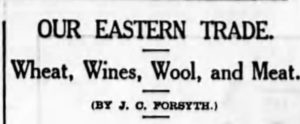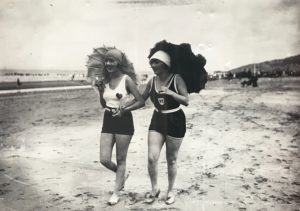Posted: December 11th, 2018 | No Comments »
A new photography book on Hong Kong’s Chunking Mansions by Nana Chen –
Squatting amid the luxury hotels and malls of modern Kowloon, Chungking Mansions resembles the dirty vent of a giant subterranean machine. This Hong Kong landmark is a hotbed of criminality and home to pimps, hookers, thieves and drug pushers. The five 17-storey towers also offer the city’s last low-rent refuge for asylum seekers and immigrants coming to start a new life.
Nepalese guesthouse owners rent out rooms to Bangladeshi workers, and Pakistanis sell mobile phones to Nigerian traders who hire Indian cargo companies to ship them home. Food stalls fill the air with the savoury aromas of international cuisine, and more than 200 guesthouses, as well as two floors of shops selling black-market, counterfeit and bargain goods, establish this unique place as a global hub of trade and multiculturalism.
In 2009, shortly after a Canadian tourist disappeared from Chungking Mansions without a trace, photographer Nana Chen began wandering the corridors. Using her camera as a guide, she discovered the Chungking Mansions not visible to the naked eye: the beating pulse that gives this notorious destination its hypnotic appeal. With compassion and courage, Chen sought to craft a portrait of Hong Kong’s last ghetto and its inhabitants before its vibrant character is erased forever by the inevitable march of progress.
“I grew up in the vicinity of Chungking Mansions. Nana Chen’s intimate, visceral pictures of the Mansions are so unsentimentally authentic and beautiful that I am speechless and deeply moved.†– Chan Koonchung, author of The Fat Years

and, if you’re in Bangkok on 16/12, a launch…

Posted: December 10th, 2018 | No Comments »
Much is made by the Australians for the success of their wines in China. Certainly as long as I can remember the Australians have been energetic in selling their wines in China and I’ve purchased and consumed many a bottle myself. However, the quest to sell Aussie wine in the Middle Kingdom goes back a bit further. Here, from the Sydney Morning Herald in October 1932, a round-up of Australia’s trade in China…

Wine is a surprising (at least to the author) addition to Australia’s trade success stories in China…port wines no less. Though, interestingly, it seems that the canny manager of the Imperial Hotel in Tientsin (Tianjin) removed the label to prevent 1930s style wine snob prejudice. That manager was, at the time, Alexander Mackprang, from a long established in China Scottish family.

Posted: December 7th, 2018 | No Comments »
Regular China Rhyming readers will know i like to post a picture of a parasol every now and then…(the search box to your right will bring up a load)…here’s two ladies, avec parasols, on the beach at Deauville in 1926…

Posted: December 4th, 2018 | No Comments »
The Paul (born Charles Geddes Clarkson Hyslop) Hyslop (architect, Bloomsburyite, wartime monuments man) photograph album recently came up for sale at Abbott and Holder in London. It’s a wonderful record of many of the members of the Bloomsbury Group and other Bight Young Things between the wars. A couple of photos of particular interest to China Rhymers in the collection.
Paul Hyslop and his sister Joy on deck aboard their ship returning from China, 1928

and a group photo taken at Knole (a beautiful country house in west Kent), the Sackville-West family home, 1929 – Anna May Wong was visiting and joined Eddy Sackville-West, the music critic and novelist, as well as Hyslop and the English actress Valerie Taylor…

Posted: December 3rd, 2018 | No Comments »
China’s inflation rate went through the roof in 1946 and the Chinese $ vs US$ exchange rate had to through something of a revision! For a while in early 1946 China’s foreign exchange rate was maintained at CN$20 to one US$. It was not until March, 1946, that the exchange rate was revised and raised to 2,020 to one, and again to 3,350 to one in August of the same year. Here’s a stark representation of living costs in Tianjin in June 1946….

Posted: November 27th, 2018 | No Comments »
Pan Yu-Lin
Pan Yu-Lin (1895-1977) belonged to the first generation of Chinese students to study fine arts in France. She was a pioneer in modernizing Chinese art with western painting at a time when it was rare for women to achieve independent careers as professional artists.
She studied in Europe for nearly eight years between Lyon, Paris, and Rome. At the National School of Fine Arts in Paris, Pan was the first Asian student to win a scholarship to study at Accademia del Belle Arti di Roma, where she studied sculpture and painting. She returned to China in 1928 and was immediately hired by the Shanghai Art Academy, her alma mater, as the head of western painting—the first woman to assume such a high academic position. She also taught at the Nanjing Central University Fine Art Department from 1931 onwards, and remained as a researcher and tutor at the Shanghai Art Academy’s painting research institute Yiyuan. Throughout her decade in China, she held four solo exhibitions and established various art societies. In 1937, she traveled to Paris again in search for her independent visual language.
Pan Yu-Lin remained in Paris until her death. Throughout her relocation to France, her works were widely exhibited in the salon circuit. Pan was the first Chinese artist to be collected by the City of Paris and followed by the National Museum of Modern Art in 1955. She won numerous awards overseas throughout her career, with her proudest achievement being the 1959 Thorlet award from the University of Paris granted by the municipal government.
20th Century Chinese Female Artist Series
Female empowerment and equality in modern societies has been a much debated topic dating back over a century. While the diverse achievements of female talents across different fields have gained better light in recent years, female artists remain an under-represented and under-appreciated segment in many societies and even more so across Chinese communities.
Yet the emergence of female artists in 20th century China was a testament to both the country’s social progress and the various redefinitions of modernity that were adopted in a historical context complicated by wars and disasters. Female agency in society was among the issues argued and promoted in the mass media of the time and retains lasting ideological power today. In scholastic studies and exhibitions, however, attention has been focused on modern Chinese male artists. Exhibitions featuring the creative attainments and influences of their female counterparts from the period are few and far between, and rarely in monographic presentations.
Asia Society Hong Kong Center’s 20th Century Chinese Female Artists Exhibition Series (“the Seriesâ€), the first of its kind in Hong Kong, aims to reclaim the story of female artists. By providing local Hong Kong audiences with important examples of their artistic accomplishments, we hope to honor them with the public recognition they deserve for their contribution to the making of modern China.
From a wider community context, the Series fits into the discourse on female empowerment and equality in today’s Hong Kong, where research indicates that women continue to face challenges in male-dominated industries as well as gender stereotypes in the media and the workplace. Through education programs for children, students, families, and the general public, we will highlight achievements of women in various industries while connecting to the lives and careers of the unique female artists presented in the Series.
The second exhibition in the Series focuses on the life and works of Pan Yu-Lin, and is made possible by The Hong Kong Jockey Club Charities Trust. It also includes the “Jockey Club Art Education and Female Empowerment Series†which are educational talks and activities targeting participation from the local community.

Chamber 1 – A Studio in Montparnasse
This chamber features Pan Yu-Lin’s studio work during the 1940s shortly after she returned to Paris. Pan lived in the artistic hub of Montparnasse, where she frequently attended life drawing sessions in the Academy of the Grande ChaumieÌ€re. There, she began to break away from the rules of academic painting to develop her own style. While Pan created many interesting group portraits in the open studios, it was in her private home studio that she created her most significant self-portraits. They reveal her unique identity as a cross-culture modern woman and independent artist. Highlights in this chamber include Self-Portrait in Red (c. 1940), Portrait of Friendship (1940) and A Doll (1942).
Chamber 2 – The Challenge of the Nude
The chamber features Pan Yu-Lin’s works in the nude genre. Life drawing was the cornerstone of her Western fine art training, and she excelled in academic figure drawing as a student in the 1920s. After she returned to Paris, she started to break away from academic tradition and experimented with vibrant nudes inspired by the work of Heri Matisse (1869-1954). In the 1950s, she began painting nudes in ink and color on paper. She combined the fluid lines of Chinese calligraphy with Western pointillist coloring to capture the female body naturalistically, and developed a unique style embracing the East and the West. Highlights in this chamber include A Woman Lying on Her Side (1938), Sweet Dreams (1940), and Women Peeping at the Window (1968).
Posted: November 26th, 2018 | No Comments »
The journal Literary Shanghai has produced a special edition for the Singapore Writers Festival this November – Shanghai in Singapore – with a bunch of original contributions (including from me) and new translations….it’ll be everywhere at the festival and available in various bookshops in Singapore and China as well as via Literary Shanghai…
there’s a piece by me in it on the old Tipsy Cafe on Wayside Road…..
you can get copies at:
Books Actually on Yong Siak Street in Singapore
Madame Mao’s Dowry on Fumin Road in Shanghai

Posted: November 23rd, 2018 | No Comments »
It’s time to party likes it’s 2004 in Shanghai again!!
China Cuckoo: An Evening with Mark Kitto

In 2004, Englishman Mark Kitto was at the peak of his career in Shanghai. Heralded by the Financial Times as a ‘mini media mogul’, his city guides That’s series were the most popular English-language publications in China. But it all came crashing down when his business, in which he invested everything, was seized by the authority.
Perhaps it was time to admit defeat and come home?
Instead, Mark turned his back on Shanghai and moved his family to the beautiful yet isolated mountain region of Moganshan, an area he had fallen in love with on a rare weekend getaway. There the ex-tycoon had written his book China Cuckoo.
Spend an evening with Mark Kitto and hear tales from his books That’s China and China Cuckoo – and more besides – of life and work in China’s booming metropolis and then a quiet rural retreat, his dealings with senior mandarins and low level bureaucrats, and what he thinks will be the reality of the ‘China Dream’. He once had one himself.
Wed 5 December 2018
19:30 – 21:00 GMT
Guanghwa Bookshop
112 Shaftesbury Avenue
London
W1D 5EJ
it’s free but register here










